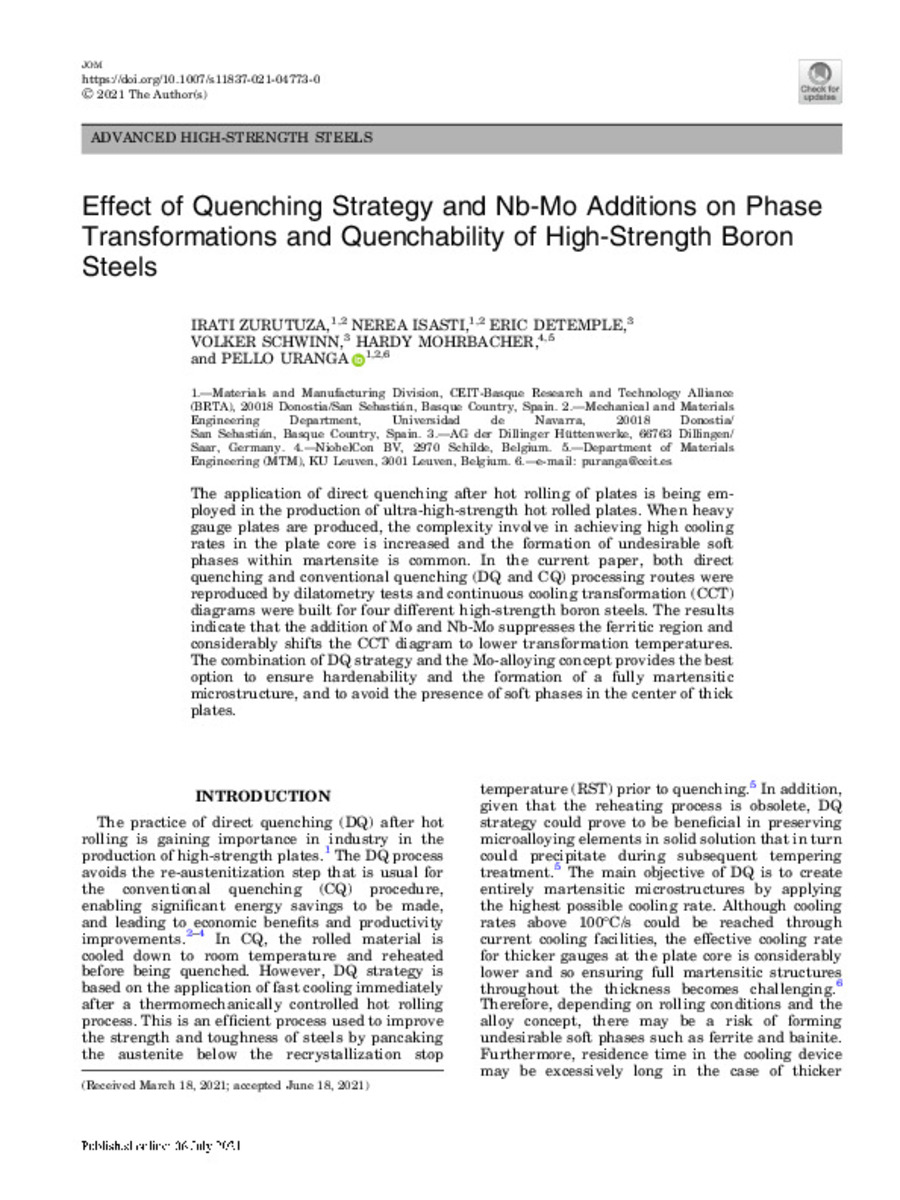Effect of quenching strategy and Nb-Mo sdditions on phase transformations and quenchability of high-strength boron steels
Keywords:
Quenching strategy
Boron steels
Quenchability of high-strength boron steels
Note:
This article is licensed under a Creative Commons Attribution 4.0 International License, which permits use, sharing, adaptation, distribution and reproduction in any medium or format, as long as you give appropriate credit to the original author(s) and the source, provide a link to the Creative Commons licence, and indicate if changes were made. The images or other third party material in this article are included in the article's Creative Commons licence, unless indicated otherwise in a credit line to the material. If material is not included in the article's Creative Commons licence and your intended use is not permitted by statutory regulation or exceeds the permitted use, you will need to obtain permission directly from the copyright holder.
Citation:
Zurutuza, I. (Irati); Isasti-Gordobil, N. (Nerea); Detemple, E. (Eric); et al. "Effect of quenching strategy and Nb-Mo sdditions on phase transformations and quenchability of high-strength boron steels". The Journal of The Minerals, Metals & Materials Society (TMS). (73), 2021, 3158 - 3168
Statistics and impact
0 citas en

0 citas en

Items in Dadun are protected by copyright, with all rights reserved, unless otherwise indicated.







